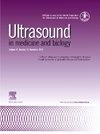SegFormer3D: Improving the Robustness of Deep Learning Model-Based Image Segmentation in Ultrasound Volumes of the Pediatric Hip
IF 2.4
3区 医学
Q2 ACOUSTICS
引用次数: 0
Abstract
Developmental dysplasia of the hip (DDH) is a painful orthopedic malformation diagnosed at birth in 1–3% of all newborns. Left untreated, DDH can lead to significant morbidity including long-term disability. Currently the condition is clinically diagnosed using 2-D ultrasound (US) imaging acquired between 0 and 6 mo of age. DDH metrics are manually extracted by highly trained radiologists through manual measurements of relevant anatomy from the 2-D US data, which remains a time-consuming and highly error-prone process. Recently, it was shown that combining 3-D US imaging with deep learning-based automated diagnostic tools may significantly improve accuracy and reduce variability in measuring DDH metrics. However, the robustness of current techniques remains insufficient for reliable deployment into real-life clinical workflows. In this work, we first present a quantitative robustness evaluation of the state of the art in bone segmentation from 3-D US and demonstrate examples of failed or implausible segmentations with convolutional neural network and vision transformer models under common data variations, e.g., small changes in image resolution or anatomical field of view from those encountered in the training data. Second, we propose a 3-D extension of SegFormer architecture, a lightweight transformer-based model with hierarchically structured encoders producing multi-scale features, which we show to concurrently improve accuracy and robustness. Quantitative results on clinical data from pediatric patients in the test set showed up to 0.9% improvement in Dice score and up to a 3% smaller Hausdorff distance 95% compared with state of the art when unseen variations in anatomical structures and data resolutions were introduced.
SegFormer3D:提高基于深度学习模型的儿童髋关节超声体积图像分割的鲁棒性。
发育性髋关节发育不良(DDH)是一种痛苦的骨科畸形,出生时诊断为1-3%的新生儿。如果不及时治疗,DDH可导致包括长期残疾在内的重大发病率。目前,这种疾病的临床诊断是使用0至6个月大的2-D超声(US)成像。DDH指标是由训练有素的放射科医生通过手工测量2d US数据中的相关解剖来提取的,这仍然是一个耗时且极易出错的过程。最近,研究表明,将3-D超声成像与基于深度学习的自动诊断工具相结合,可以显著提高测量DDH指标的准确性,并减少变异性。然而,当前技术的稳健性仍然不足以可靠地部署到现实生活中的临床工作流程中。在这项工作中,我们首先对3d US骨分割技术的现状进行了定量稳健性评估,并展示了在常见数据变化(例如,与训练数据中遇到的图像分辨率或解剖视野的微小变化)下,使用卷积神经网络和视觉转换模型进行失败或不可信分割的示例。其次,我们提出了SegFormer架构的3-D扩展,这是一种轻量级的基于变压器的模型,具有分层结构的编码器,可以产生多尺度特征,同时提高了准确性和鲁棒性。测试集中儿科患者的临床数据的定量结果显示,当引入解剖结构和数据分辨率的不可见变化时,与目前的技术水平相比,Dice评分提高了0.9%,Hausdorff距离减少了95%,提高了3%。
本文章由计算机程序翻译,如有差异,请以英文原文为准。
求助全文
约1分钟内获得全文
求助全文
来源期刊
CiteScore
6.20
自引率
6.90%
发文量
325
审稿时长
70 days
期刊介绍:
Ultrasound in Medicine and Biology is the official journal of the World Federation for Ultrasound in Medicine and Biology. The journal publishes original contributions that demonstrate a novel application of an existing ultrasound technology in clinical diagnostic, interventional and therapeutic applications, new and improved clinical techniques, the physics, engineering and technology of ultrasound in medicine and biology, and the interactions between ultrasound and biological systems, including bioeffects. Papers that simply utilize standard diagnostic ultrasound as a measuring tool will be considered out of scope. Extended critical reviews of subjects of contemporary interest in the field are also published, in addition to occasional editorial articles, clinical and technical notes, book reviews, letters to the editor and a calendar of forthcoming meetings. It is the aim of the journal fully to meet the information and publication requirements of the clinicians, scientists, engineers and other professionals who constitute the biomedical ultrasonic community.

 求助内容:
求助内容: 应助结果提醒方式:
应助结果提醒方式:


